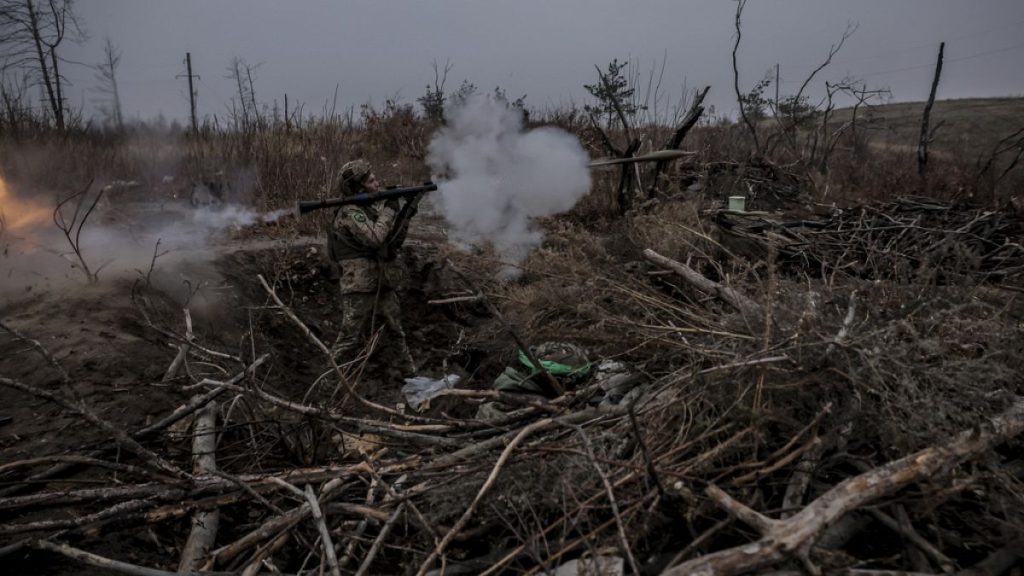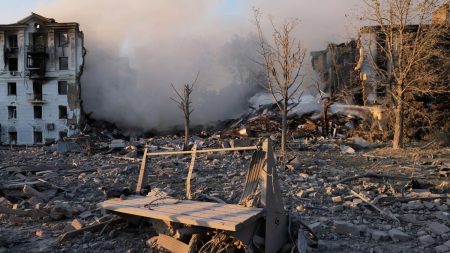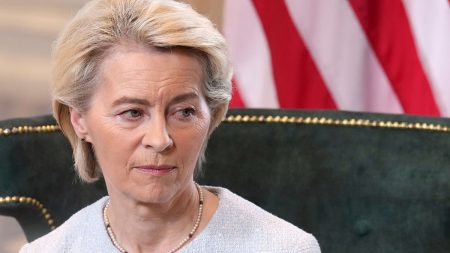The ongoing conflict in Ukraine escalates as the Russian defense ministry recently announced the alleged liberation of two towns in the Donetsk region, coinciding with President Vladimir Putin’s approval of a significant increase in military spending for 2025. This budget increase marks a record level of military investment, reflecting Moscow’s determination to secure victory in the protracted war against Ukraine. As the situation intensifies, Russian forces targeted various military infrastructures, including airfields, drone assembly shops, and warehouses, in what they assert are efforts to diminish Ukraine’s military capabilities. The Defense Ministry reported strikes on 136 specified areas, highlighting the extensive scope of their operations.
In a display of military prowess, the Russian defense ministry released footage purportedly showing its personnel employing FPV (first-person view) drones to strike at camouflaged positions of Ukrainian troops. Among the claimed targets during this aerial campaign was a Starlink communication unit. However, this information comes with the caveat that independent verification of the video’s authenticity remains unachievable. As Russia ramped up its military activities in Ukraine, high-ranking officials from the European Union visited the country, vowing to impose additional sanctions on Russia to respond to its aggressive actions.
The situation on the frontlines has seen both sides engaged in intense confrontations, with Ukrainian officials reporting that Russia launched a series of drone attacks over the weekend. Out of 78 drones that were sent into Ukraine, Ukrainian air defense forces successfully destroyed 32. Furthermore, an additional 45 drones likely lost connectivity, possibly due to electronic jamming efforts, indicating the technological battle intensifying alongside the traditional warfare fronts. Nonetheless, the sustained drone strikes have been devastating, resulting in civilian casualties and injuries as Russia’s aggression continues unabated.
The toll of the violence is evident, as local authorities stated that at least 11 civilians were killed and over 50 injured during recent Russian airstrikes across different regions of Ukraine. A particularly tragic incident occurred in the southern city of Kherson, where a Russian drone struck a civilian minibus, leading to the deaths of three individuals and injuries to several others. This region, which underwent illegal annexation by Russia in 2022, represents one of the focal points of the ongoing conflict, where Ukrainian forces had recaptured significant territories through counteroffensive operations months earlier.
As the war rages on, it reflects the broader ramifications of Russia’s full-scale invasion of Ukraine that began in February 2022. This conflict has become the largest military engagement in Europe since World War II, significantly depleting resources on both sides, causing severe humanitarian crises, and shaping geopolitical relationships. The consequences of the war extend beyond the battlefield, impacting global energy markets, economic stability, and security alliances, as countries navigate a complex landscape of military engagement and diplomatic negotiations.
Ultimately, the ongoing conflict not only underscores the ruthlessness of the current military exchanges but also raises concerns regarding the future of Ukraine and the implications for European security architecture. As both sides brace for further escalation and maneuvering, the continuation of this war poses significant questions about the objectives, strategies, and potential resolutions that might emerge in a landscape increasingly marked by devastation and international involvement. The potential for broader conflict or resolution remains uncertain as military and diplomatic efforts evolve in response to the shifting dynamics of warfare and international relations.














